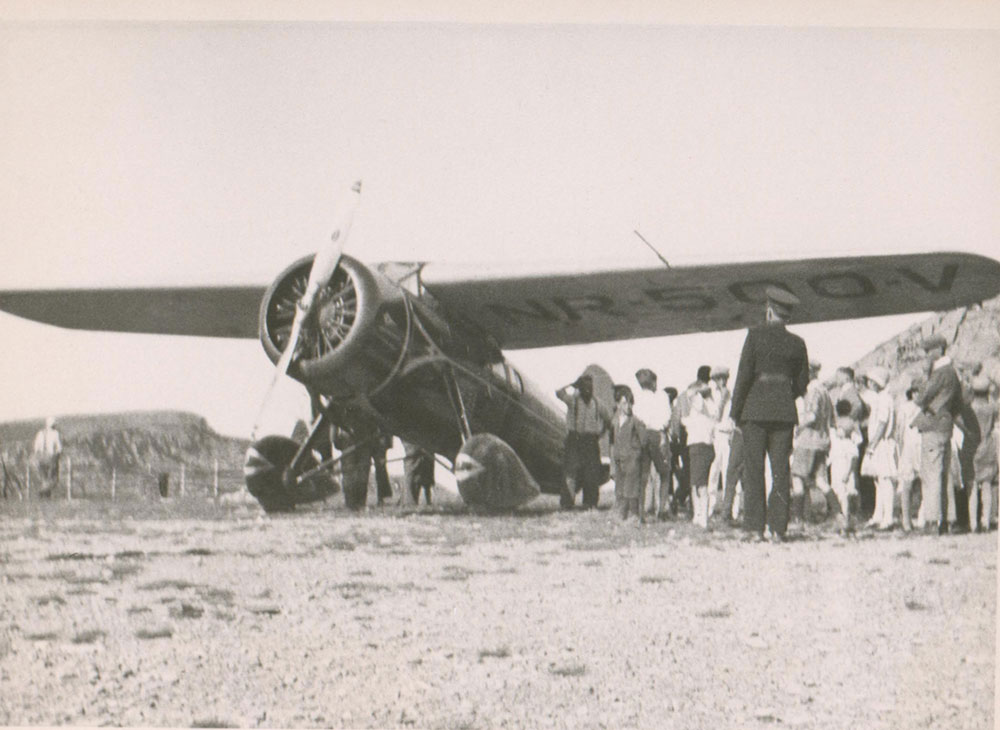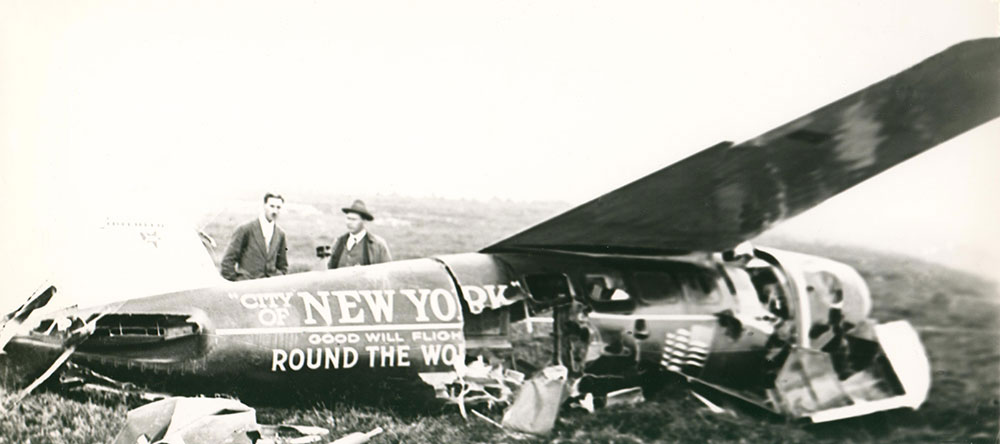Crash at the Airstrip: The City of New York (1930)
Transatlantic flights were dangerous endeavours, and as proven by the Sir John Carling, pilots faced uncertain fates over the Atlantic. But in the case of John Henry Mears’s City of New York, the airstrip itself could be a hazardous enemy as well.
An experienced navigator and Broadway producer, Mears previously held the world record for the fastest around-the-world flight, circumnavigating the globe in less than 24 days in 1928. The Graf Zeppelin later broke this record by three days in the fall of 1928, and Mears, a fierce competitor, was determined to hold the record again.
On August 2, 1930, Mears and pilot Harry Brown left Roosevelt Field, New York, on their attempted around-the-world flight. Their first stop was Harbour Grace. They planned to also land in Ireland, England, Belgium, Poland, Latvia, Lithuania, China, and Japan, and head back to Canada via the Pacific.
Before leaving, Canadian-born actress Mary Pickford, nicknamed “America’s Sweetheart,” gifted Mears a dog, Tailwind, who served as the flight’s much-beloved mascot.
The City of New York landed at Harbour Grace at 1:50 p.m. to a small crowd. Frank Archibald, representing the Prime Minister, formally welcomed them to Newfoundland. Mears told gathered reporters he was confident of breaking the record once again.
Regrettably, Mears proved to be overeager. Ignoring weather warnings from the Airport Trust Company, the crew decided to resume the flight before daylight the next morning. At Brown’s request, flares lighted the west end of the runway, and the headlights of parked cars illuminated the takeoff.
To take advantage of the day’s southwest wind, the plane left in a diagonal direction, from east to west. On its way down the runway, the plane lost control, crashing into bushes and rocks near the southern edge of the field.
The crash damage was significant. Though Brown was unhurt, Mears complained of a shoulder injury. However, they soon had a bigger problem: their dog was missing! Spooked after the crash, Tailwind had fled into the woods near the airstrip.
Distraught, Mears offered a $100 reward for the dog’s safe return-no small sum in 1930. Thankfully, Tailwind was soon found in nearby Riverhead by resident George Hunt.
Though the plane was beyond repair, the men were thankful for their miraculous escape. They vowed to fly again. Today, residents still have souvenirs from this famous crash, and artifacts from the plane are on display at the Conception Bay Museum.



